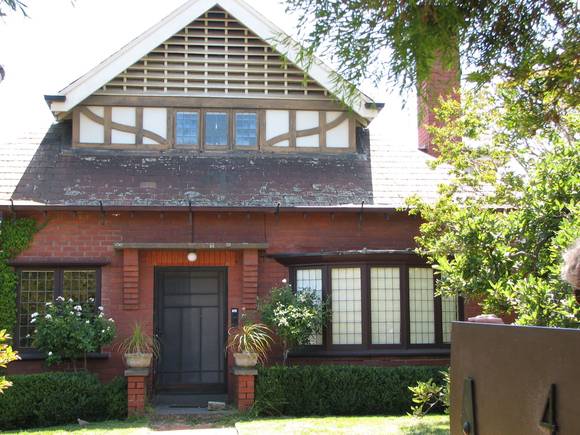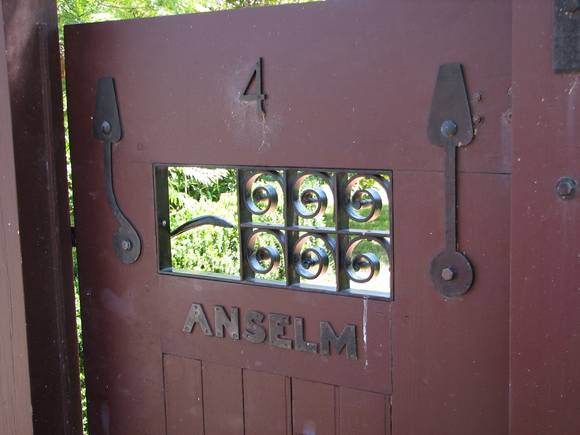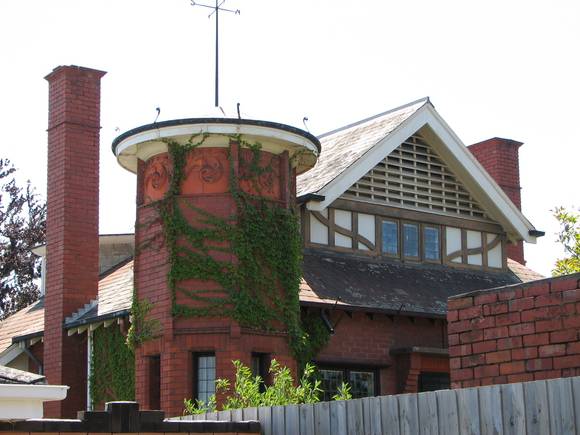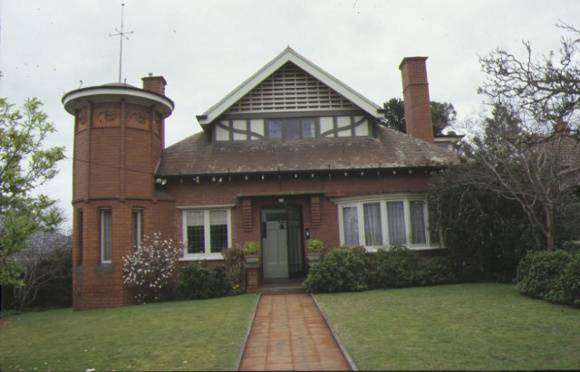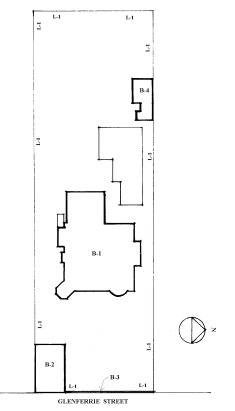| Back to search results » | Back to search page » |
|
ANSELM
Location4 GLENFERRIE STREET CAULFIELD NORTH, GLEN EIRA CITY
File Number607044LevelRegistered |
|
Statement of Significance
What is significant?
Anselm was designed by noted English born architect Robert Joseph
Haddon(1866-1929) as his own house and constructed in 1906. A single
storey Arts and Crafts influenced red brick house with attic, Anselm has
a pyramidal slate roof with prominent chimney stacks. There is a
octagonal corner tower with saucer shaped domed roof surmounted by a
weather vane, and the tower has decorative terracotta panels immediately
below the eaves line. The front door opens immediately into a large
living or common room, screened from view by a timber and bottle glass
screen. The large room was designed to function as a drawing and dining
room. The house is rich with hand crafted details including door and
window furniture, wrought iron gutter brackets, fireplaces (one with
built in wood box), and fire tools. The interior decoration includes
hand painted frieze of Port Phillip in the study, and a hand painted
frieze of turbulent sea with sailing boats in the tiled bathroom. There
is a small hand painted tile at the base of the tower which states ?This
building was erected AD1906 from designs by Robt J Haddon FRIBA,Lond
FRIVA Melb Architect?. He also designed an attic addition which was
constructed in 1927. Anselm is substantially intact although the double
casement window immediately to the south of the front door was
originally circular.
How is it significant?
Anselm is of historical and architectural significance to the state of Victoria.
Why is it significant?
Anselm is historically significant as the home of highly influential
architect, teacher and writer Robert Haddon, who was a consulting
architect from his office known as the Central Drawing Office and was
associated with the work of a number of architects and firms such as G B
Leith and Sydney Smith and Ogg of Melbourne and Laird and Barlow of
Geelong, and Michael McCabe of Camperdown. He was head of the department
of architecture at the Working Men?s College from 1902 and a founding
Vice president of the Arts and Crafts Society of Victoria.. He
influenced many architects through his teachings including Percy Oakley,
A C Leith, E M Nicholls and Eric Hughes who were articled in his office
and later became principals of their own firms.
Anselm is architecturally significant as an Arts and Crafts influenced
villa and as an example of the work of architect Robert Haddon, which
combines elements characteristic of much of his work including the
corner tower, decorative Art Nouveau style terra cotta work. Anselm is
important for its ability to demonstrate many of the principles he
espoused and which are explained in his book ?Australian Architecture?
published in 1908. These principles include simplicity, originality,
craftsmanship, honesty and national sentiment. The house demonstrates
the various ideas he held on the external appearance of a building, as
well as on the design of the house and garden. Anselm is significant for
its innovative planning with the use of what he described as a common
room, rather than separate dining and drawing rooms, and unusual absence
of a hallway. It is also significant for exhibiting a richness in hand
crafted or painted decoration, which are evidence of his lifelong
interest in art and craftwork. The garden retains much of the original
hard landscaping including the central terracotta paved front path, side
path and glazed terracotta surface drainage system, and is also
important for its ability to demonstrate his ideas on garden design.
Group
Residential buildings (private)
Category
Residential Contents (movable)


